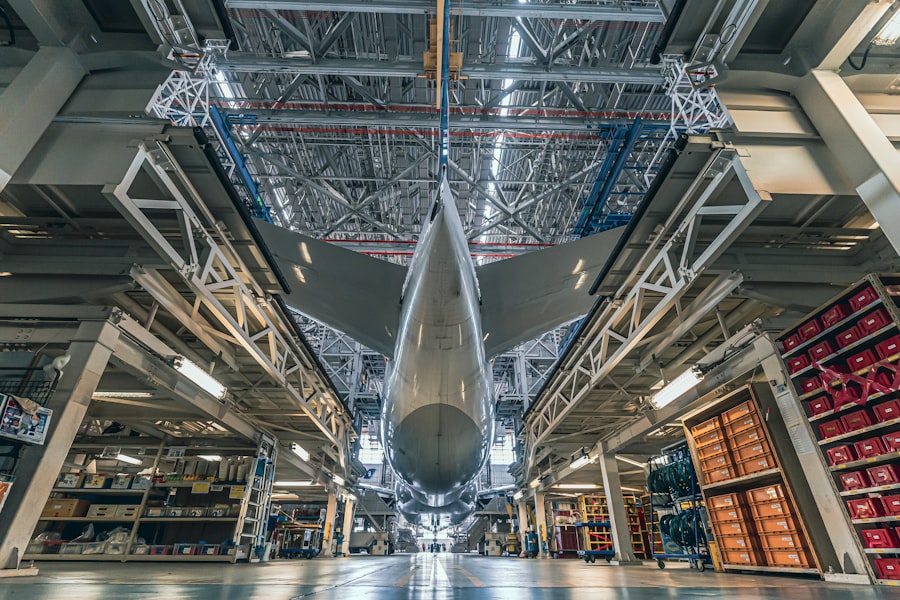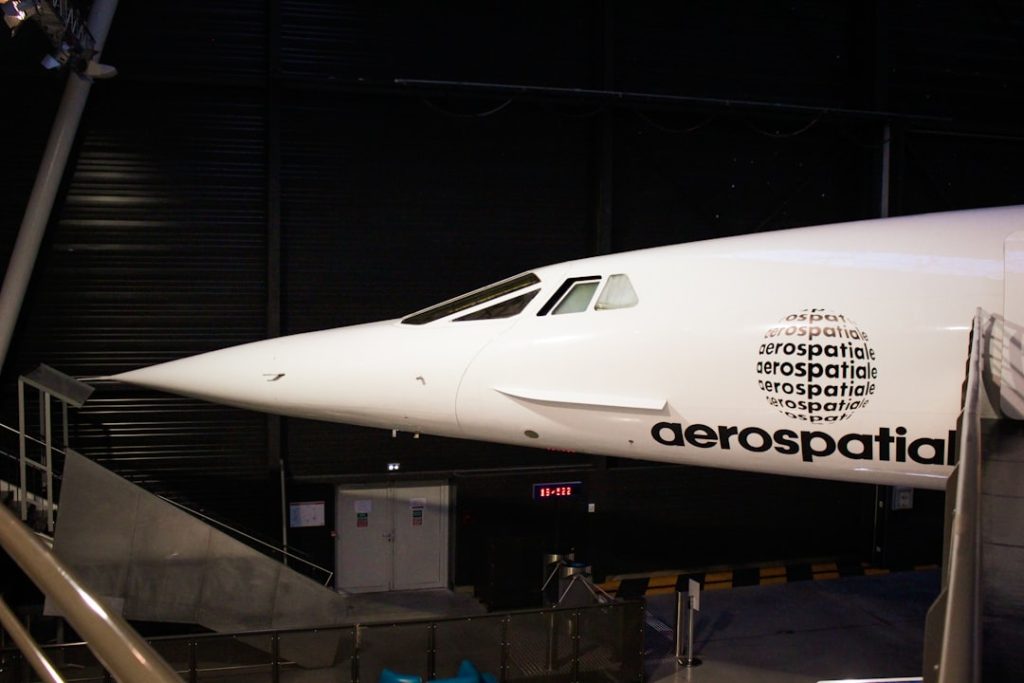Aerospace engineering is a multifaceted discipline that encompasses the design, development, testing, and production of aircraft, spacecraft, and related systems and equipment. This field is divided into two primary branches: aeronautical engineering, which focuses on vehicles that operate within the Earth’s atmosphere, and astronautical engineering, which deals with vehicles that operate outside of it. The evolution of aerospace engineering has been marked by significant technological advancements, driven by the need for improved performance, safety, and efficiency in air and space travel.
The discipline combines principles from various fields such as mechanical engineering, materials science, computer science, and physics, making it a rich area of study and innovation. The history of aerospace engineering can be traced back to the early 20th century with the Wright brothers’ first powered flight in 1903. Since then, the field has undergone remarkable transformations, particularly during and after World War II when military needs accelerated research and development.
The space race of the 1960s further propelled advancements in aerospace technology, leading to milestones such as the Apollo moon landing. Today, aerospace engineering continues to evolve rapidly, driven by globalization, environmental concerns, and the increasing demand for commercial air travel and space exploration. As we delve deeper into this field, it becomes evident that aerospace engineering firms play a pivotal role in shaping the future of flight technology.
Key Takeaways
- Aerospace engineering firms drive advancements in flight technology through innovation and research.
- Leading global firms set industry standards and pioneer cutting-edge aerospace solutions.
- Breakthroughs in materials, propulsion, and avionics are transforming aerospace capabilities.
- Collaboration between companies, governments, and research institutions accelerates progress.
- Growing career opportunities reflect the expanding scope and future potential of aerospace engineering.
The Role of Aerospace Engineering Firms in Advancing Flight Technology
Aerospace engineering firms are at the forefront of innovation in flight technology, serving as the backbone of the industry. These firms engage in extensive research and development (R&D) to create cutting-edge technologies that enhance the performance and safety of aircraft and spacecraft. They are responsible for designing new aircraft models that are more fuel-efficient, quieter, and capable of carrying larger payloads.
For instance, companies like Boeing and Airbus invest billions in R&D to develop next-generation aircraft that meet stringent environmental regulations while also catering to the growing demand for air travel. Moreover, aerospace firms are instrumental in integrating advanced materials and manufacturing techniques into their designs. The use of composite materials, for example, has revolutionized aircraft construction by reducing weight while maintaining structural integrity.
This shift not only improves fuel efficiency but also enhances overall performance. Additionally, aerospace engineering firms are increasingly adopting digital technologies such as artificial intelligence (AI) and machine learning to optimize design processes and improve predictive maintenance capabilities. These advancements not only streamline operations but also contribute to safer and more reliable flight experiences.
Top Aerospace Engineering Firms in the World

The aerospace industry is home to several leading firms that have established themselves as pioneers in engineering excellence and innovation. Boeing, headquartered in Chicago, Illinois, is one of the largest aerospace companies globally, known for its commercial airplanes, defense systems, and space exploration technologies. With a rich history dating back to 1916, Boeing has been instrumental in developing iconic aircraft such as the 747 and the 787 Dreamliner.
The company continues to push boundaries with its focus on sustainability and advanced manufacturing techniques. Another major player is Airbus, based in Toulouse, France. Founded in 1970, Airbus has become synonymous with innovation in commercial aviation.
The A320 family of aircraft revolutionized air travel with its introduction of fly-by-wire technology and fuel-efficient engines. Airbus is also making strides in sustainable aviation through initiatives like the development of hydrogen-powered aircraft. Other notable firms include Lockheed Martin, known for its defense technologies and advanced aircraft like the F-35 Lightning II; Northrop Grumman, which specializes in unmanned systems; and SpaceX, a trailblazer in commercial spaceflight that has redefined access to space with its Falcon rockets and Dragon spacecraft.
Innovations and Breakthroughs in Aerospace Engineering
| Innovation/Breakthrough | Description | Impact on Aerospace Engineering | Year Introduced | Key Metrics |
|---|---|---|---|---|
| Composite Materials | Use of carbon fiber reinforced polymers and other composites to reduce weight. | Improved fuel efficiency and increased aircraft range. | 1980s – Present | Weight reduction up to 20-30%, increased strength-to-weight ratio |
| Fly-by-Wire Systems | Electronic flight control systems replacing mechanical linkages. | Enhanced aircraft stability, safety, and maneuverability. | 1970s – Present | Reduced pilot workload, improved response time by 30% |
| Hypersonic Propulsion | Development of engines capable of speeds greater than Mach 5. | Potential for ultra-fast travel and advanced military applications. | 2000s – Present | Speeds exceeding Mach 5, thermal resistance improvements |
| Electric and Hybrid Propulsion | Integration of electric motors and hybrid systems in aircraft propulsion. | Reduction in emissions and fuel consumption. | 2010s – Present | Emission reduction up to 50%, noise reduction by 40% |
| 3D Printing (Additive Manufacturing) | Use of 3D printing for manufacturing complex aerospace components. | Reduced production time and cost, increased design flexibility. | 2010s – Present | Production time cut by 70%, weight reduction of parts by 25% |
| Autonomous Flight Systems | Development of AI-driven autopilot and unmanned aerial vehicles (UAVs). | Improved mission capabilities and reduced human error. | 2010s – Present | Flight accuracy improved by 35%, operational cost reduction |
| Supersonic Commercial Travel | New designs for quieter and more efficient supersonic jets. | Potential to reduce intercontinental travel times significantly. | 2020s – Ongoing | Noise reduction by 50%, fuel efficiency improvements |
The landscape of aerospace engineering is characterized by continuous innovation and breakthroughs that redefine what is possible in flight technology. One significant area of advancement is the development of electric propulsion systems for aircraft. Companies like magniX are pioneering electric motors that can power regional aircraft with zero emissions.
This shift towards electrification not only addresses environmental concerns but also promises lower operating costs for airlines. Another groundbreaking innovation is the use of autonomous systems in aviation. Unmanned aerial vehicles (UAVs), commonly known as drones, have seen exponential growth in both military and civilian applications.
Companies like DJI have popularized drone technology for aerial photography and surveying, while military applications include reconnaissance and logistics support. Furthermore, advancements in artificial intelligence are enabling autonomous flight systems that can enhance safety by reducing human error during critical phases of flight.
The Future of Aerospace Engineering: Trends and Developments
As we look toward the future of aerospace engineering, several key trends are emerging that will shape the industry landscape. One prominent trend is the increasing emphasis on sustainability. With growing concerns about climate change and environmental impact, aerospace firms are investing heavily in research to develop greener technologies.
This includes exploring alternative fuels such as sustainable aviation fuel (SAF) derived from renewable sources and researching hybrid-electric propulsion systems that can significantly reduce carbon emissions. Additionally, the rise of urban air mobility (UAM) is set to transform transportation within cities. Companies like Joby Aviation and Volocopter are developing electric vertical takeoff and landing (eVTOL) aircraft designed for short-distance travel within urban environments.
These innovations promise to alleviate traffic congestion while providing a new mode of transportation that is efficient and environmentally friendly. As regulatory frameworks evolve to accommodate these new technologies, we can expect to see UAM become a reality within the next decade.
Collaboration and Partnerships in the Aerospace Industry

Collaboration is a cornerstone of success in the aerospace industry, where complex projects often require expertise from multiple disciplines. Aerospace engineering firms frequently partner with universities, research institutions, and government agencies to leverage collective knowledge and resources. For instance, NASA collaborates with various aerospace companies on projects aimed at advancing space exploration technologies.
These partnerships facilitate knowledge transfer and foster innovation by combining academic research with practical applications. Moreover, international collaborations are becoming increasingly common as global challenges necessitate a unified approach to aerospace development. The European Union’s Clean Sky initiative exemplifies this trend by bringing together industry stakeholders to develop innovative technologies aimed at reducing aviation’s environmental impact.
Such collaborative efforts not only enhance technological advancements but also promote standardization across the industry, ensuring that safety and performance benchmarks are met globally.
Career Opportunities in Aerospace Engineering Firms
The field of aerospace engineering offers a diverse array of career opportunities for individuals passionate about aviation and space exploration. Aerospace engineers can specialize in various areas such as structural design, propulsion systems, avionics, or systems integration. Entry-level positions often require a bachelor’s degree in aerospace engineering or a related field; however, advanced roles may necessitate a master’s degree or even a Ph.D., particularly for those involved in research or academia.
In addition to traditional engineering roles, there are opportunities in project management, quality assurance, and regulatory compliance within aerospace firms. As companies increasingly adopt digital technologies like AI and data analytics, there is also a growing demand for professionals skilled in software development and data science to support these initiatives. Internships and co-op programs provide valuable hands-on experience for aspiring engineers while fostering connections within the industry.
The Impact of Aerospace Engineering Firms on the Future of Flight
Aerospace engineering firms are pivotal players in shaping the future of flight technology through their relentless pursuit of innovation and excellence. Their contributions extend beyond mere advancements in aircraft design; they encompass a broader vision for sustainable aviation and space exploration that aligns with global priorities such as environmental stewardship and technological advancement. As these firms continue to collaborate across sectors and borders, they will undoubtedly drive forward-thinking solutions that redefine our understanding of flight.
The impact of aerospace engineering firms on society is profound; they not only enhance our ability to connect across vast distances but also inspire future generations to explore new frontiers beyond our planet. As we stand on the brink of new technological revolutions—be it electric propulsion or urban air mobility—the role of these firms will be crucial in navigating challenges while seizing opportunities that lie ahead. The future of aerospace engineering promises exciting developments that will transform how we perceive travel and exploration in both air and space.




